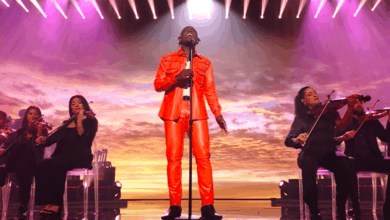From Ban to Billboard: How Jason Aldean’s Anthem Sparked a Firestorm
Isn’t it remarkable how often the fastest way to make something famous is by trying to silence it? History is full of examples, but in modern music, few cases illustrate it more vividly than the controversy surrounding Jason Aldean’s “Try That in a Small Town.”
When the song first appeared, Aldean’s fans embraced it warmly. To them, it was a passionate, patriotic anthem that spoke to the resilience, loyalty, and values of close-knit communities across America. The lyrics carried an energy of defiance and pride, a kind of musical statement that celebrated traditional ways of life.
Then, in what seemed like an instant, the narrative shifted. The song was abruptly removed from CMT’s rotation, and what had begun as another Aldean single suddenly became the focal point of a nationwide debate. What had been a piece of entertainment now stood accused of carrying dangerous undertones.
At the core of the backlash were two explosive points. First, critics argued that the lyrics leaned into a vigilante mindset, glorifying a brand of rough justice that many considered inflammatory. Second, the music video had been filmed at a Tennessee courthouse, a site burdened with a painful history of racial violence. Together, these elements transformed the song from a country ballad into a lightning rod.
For opponents, the message was clear: the song had crossed a moral and cultural line. They demanded accountability and sought to minimize its reach, convinced that pulling it from rotation would blunt its influence. In their view, censorship was a necessary step to prevent the spread of a message they saw as divisive.
But instead of quieting the storm, the move had the opposite effect. Taking the song off the airwaves was like tossing gasoline on an already smoldering fire. The attempt to mute Aldean’s voice only amplified it, fueling more interest, more conversation, and more outrage.
Suddenly, “Try That in a Small Town” wasn’t just a country single. It became a cultural battleground. For Aldean’s fans, streaming the track, buying the single, and sharing it online became acts of defiance — proof that they would not allow what they saw as censorship to dictate their taste.
For those who had never heard the song before, the controversy itself created irresistible curiosity. The debate dominated headlines, social media feeds, and late-night conversations. Everyone seemed to have an opinion, and those opinions only deepened the song’s grip on the public imagination.
The unexpected result was staggering. Rather than disappearing into obscurity, the song climbed the charts at a speed few could have predicted. Each criticism, each headline, and each argument only added more fuel to the fire. Far from being buried, the song became a phenomenon.
Then came the moment no one anticipated: “Try That in a Small Town” surged all the way to the top of the Billboard Hot 100. For Jason Aldean, this was a career milestone — his very first number one on the chart. Ironically, the controversy meant to silence him had instead handed him the greatest commercial triumph of his life.
At that point, the track was no longer just a piece of music. It had transformed into a cultural statement, a line in the sand that divided audiences along ideological fault lines. It stood as both a rallying cry for some and a point of condemnation for others.
The song’s trajectory became a lesson in modern media dynamics. Attempts to suppress it did not weaken its reach but instead multiplied its audience. In the digital age, where curiosity can be satisfied instantly with a click, controversy often functions as the most powerful marketing tool of all.
Beyond the charts, the story of Aldean’s hit raised deeper questions about art, free expression, and the unintended consequences of censorship. Can silencing a message ever truly work in a world where information spreads so quickly? Or does suppression only guarantee the opposite result, turning songs into symbols larger than their creators ever imagined?
For Aldean himself, the experience cemented a new chapter in his career. What began as a single intended for country radio evolved into a national flashpoint, tying his name to one of the most polarizing cultural debates of the decade. Love it or hate it, people could no longer ignore it.
In the end, “Try That in a Small Town” became more than three minutes of music. It became a case study in backlash, a reminder that sometimes trying to turn down the volume only makes the sound ring louder. And it revealed something even greater: in today’s divided climate, a song can become a symbol — not just of art, but of the battles a nation wages with itself.



